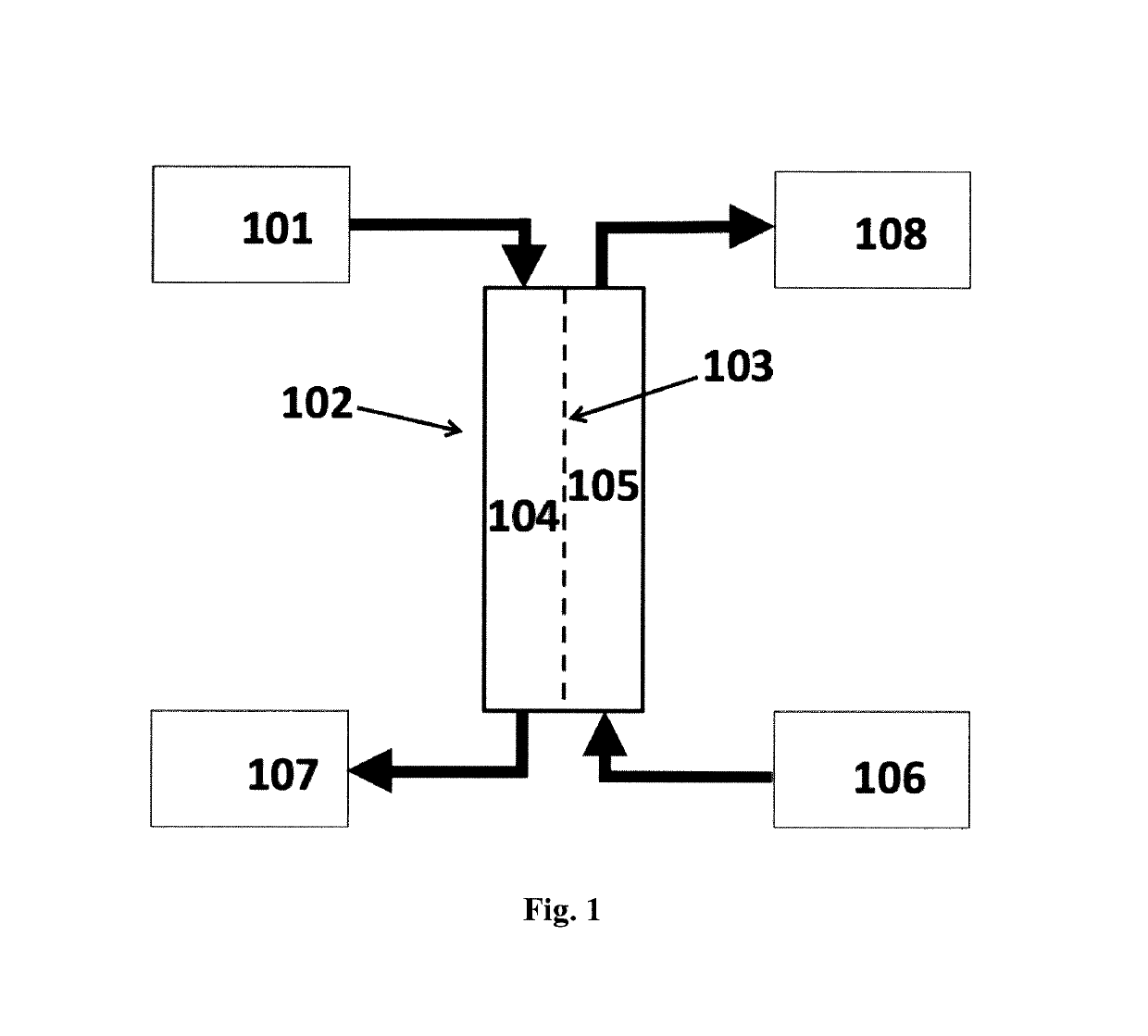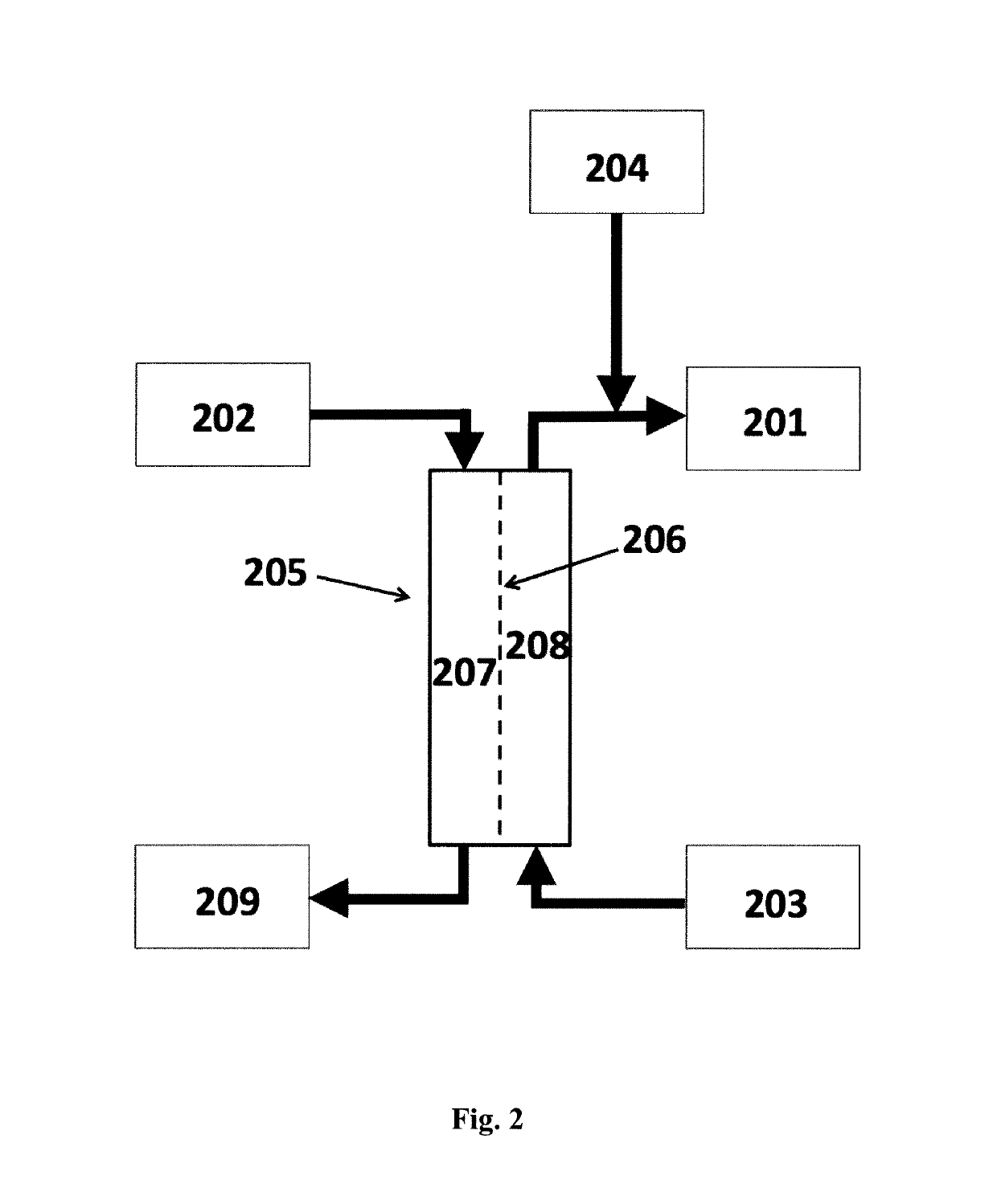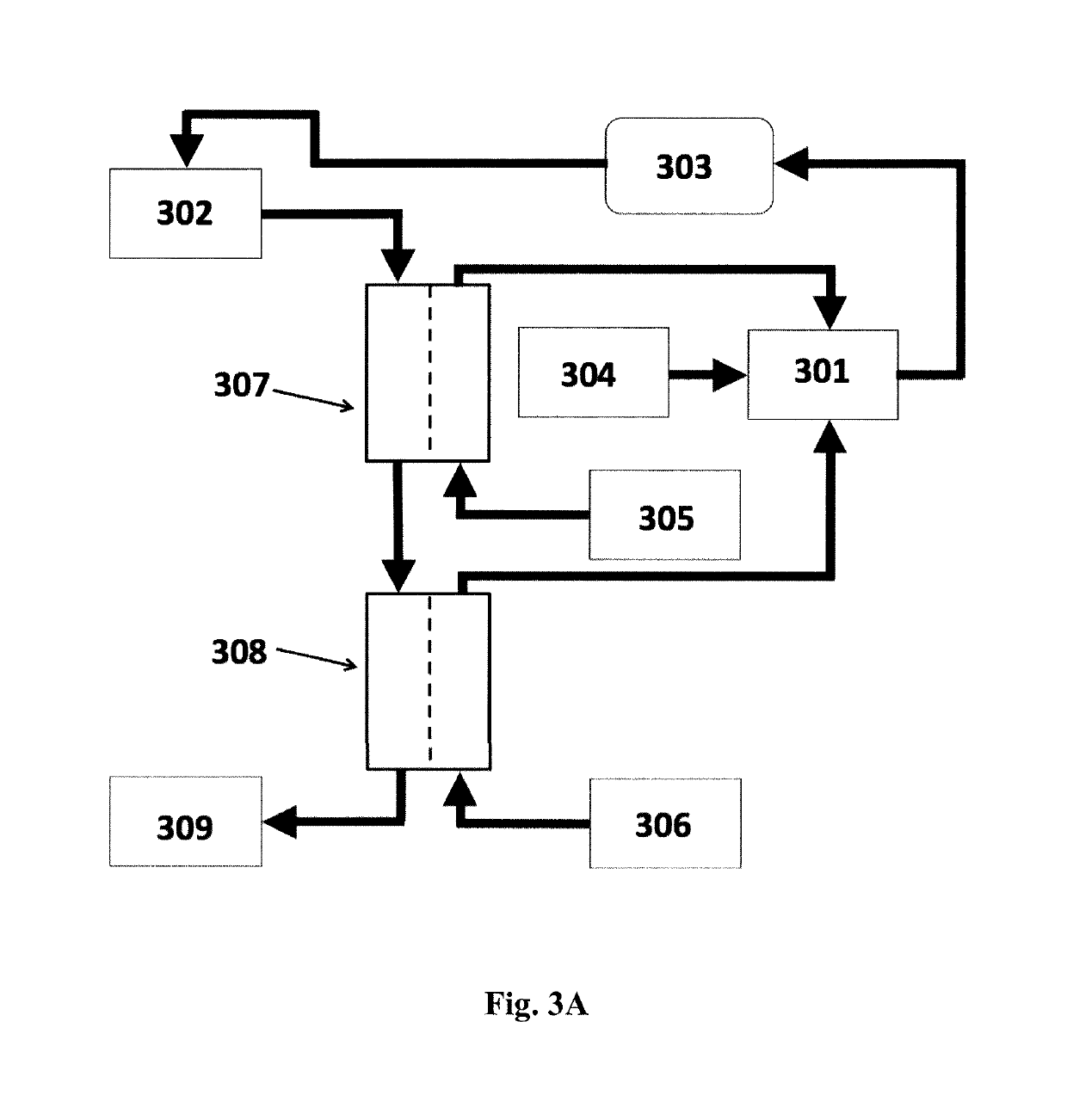Systems for utilizing the water content in fluid from a renal replacement therapy process
a technology of renal replacement therapy and fluid, applied in the field of renal replacement therapy system, can solve the problems of large water consumption, large water volume, and need to replace a large amount of water, and achieve the effect of enhancing the amount and the rate of water transfer, and reducing the cost of treatmen
- Summary
- Abstract
- Description
- Claims
- Application Information
AI Technical Summary
Benefits of technology
Problems solved by technology
Method used
Image
Examples
example 1
otentials of Dialysate Concentrates Vs Ready Dialysates
[0102]The osmotic pressure of one example of an acid and a basic (bicarbonate) concentrate and the resulting ready-to-use dialysate was calculated using OLI Analyzer Studio 9.0 (OLI Systems Inc., NJ, US). In the calculated example, 1 L of the liquid acid concentrate is to be mixed with 1.575 L of bicarbonate concentrate and 42.425 L of purified water to give 45 L of ready-to-use dialysate. Table 4 gives the compositions of the three liquids and Table 5 shows the calculated osmotic pressures.
[0103]
TABLE 4Compositions of the liquidsCompositionNa+K+Ca2+Mg2+Cl−HCO3−AcetateGlucoseLiquid(mmol / L)(mmol / L)(mmol / L)(mmol / L)(mmol / L)(mmol / L)(mmol / L)(g / L)Acid477013567.522.5495013545concentrateBicarbonate10001000concentrateReady-to-1383.01.50.5110323.01.0use dialysate
[0104]
TABLE 5Estimated osmotic pressuresLiquidOsmotic Pressure (bar) (at 37° C.)Acid concentrate412Basic concentrate40Ready-to-use dialysate8
[0105]The spent dialysate will typical...
example 1b
tentials of Replacement Fluid Concentrates Vs Ready Replacement Fluids
[0106]The osmotic pressures of two examples of replacement fluid concentrates and the resulting ready-to-use replacement fluids were calculated using OLI Analyzer Studio 9.0 (OLI Systems Inc., NJ, US).
[0107]In the calculated examples, 0.240 L of the concentrate is to be mixed with 3 L of purified water to give 3.24 L of infusate solution.
[0108]Table 4b gives the compositions of the three liquids and Table 5b shows the calculated osmotic pressures.
[0109]
TABLE 4bCompositions of the liquidsCompositionNaClMgCl2•6H2ONaHCO3Liquid(g / L)(g / L)(g / L)Low bicarbonate90.732.0628.35concentrateHigh bicarbonate82.842.0639.70concentrateNa+Mg2+Cl−HCO3−Liquid(mmol / L)(mmol / L)(mmol / L)(mmol / L)Diluted Low1400.75116.525bicarbonateconcentrateDiluted High1400.75106.535bicarbonateconcentrate
[0110]
TABLE 5bEstimated osmotic pressuresCompositionLiquidOsmotic Pressure (bar) (at 37° C.)Low bicarbonate concentrate107.7High bicarbonate concentrate10...
example 2
on of Vesicles Containing Aquaporin Water Channels
[0112]1 mg / mL Asolectin proteoliposomes, and lipid to protein ratio (LPR) 200 using AqpZ Mw 27233 are prepared according to the following protocol:
1) Fill a 50 mL glass evaporation vial with 5 mL of a 2 mg / mL stock solution of asolectin (mW 786.11 g / mol, Sigma) in CHCl3.
2) Evaporate the CHCl3 using a rotation evaporator for at least 2 h to complete dryness.
3) Add 0.8 mL of buffer solution (1.3% octylglucoside (OG) in PBS pH 7.4) to rehydrate the film obtained in the evaporation vial in step 2.
4) Shake the vial at maximum rpm on a platform shaker (Heidolph orbital platform shaker Unimax 2010 or equivalent) until the lipid is dissolved.
5) Add 1.73 mg of AqpZ in a protein buffer containing Tris pH8, glucose and OG, 10 mg / mL, and rotate vial for 15 min at 200 rpm, the AqpZ being prepared according to description herein.
6) Slowly add 9.03 ml PBS (pH 7.4 without OG), and shake vial for 15 min at 200 rpm.
7) Freeze / thaw the combined solution...
PUM
 Login to View More
Login to View More Abstract
Description
Claims
Application Information
 Login to View More
Login to View More - R&D
- Intellectual Property
- Life Sciences
- Materials
- Tech Scout
- Unparalleled Data Quality
- Higher Quality Content
- 60% Fewer Hallucinations
Browse by: Latest US Patents, China's latest patents, Technical Efficacy Thesaurus, Application Domain, Technology Topic, Popular Technical Reports.
© 2025 PatSnap. All rights reserved.Legal|Privacy policy|Modern Slavery Act Transparency Statement|Sitemap|About US| Contact US: help@patsnap.com



